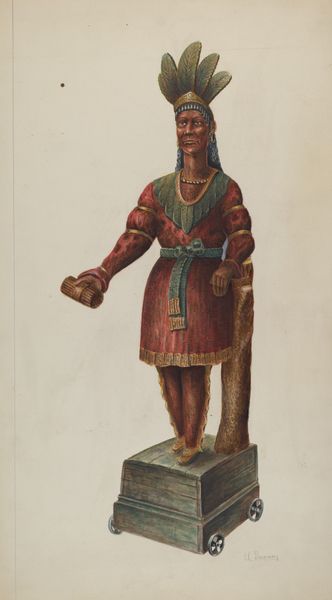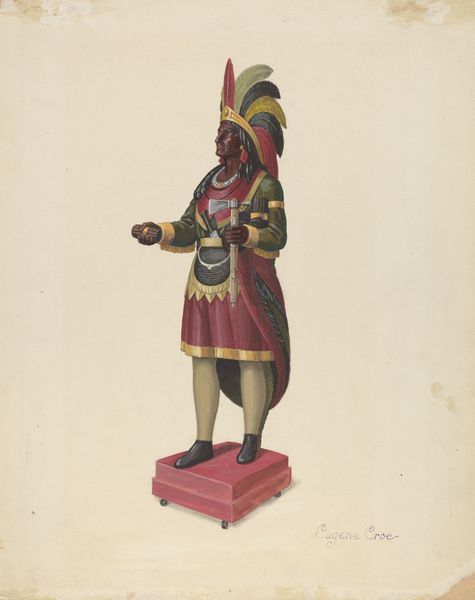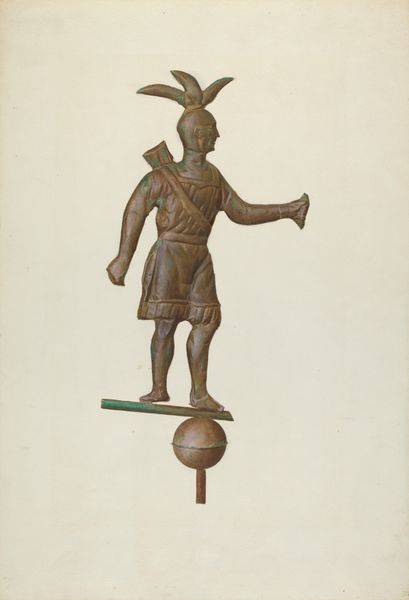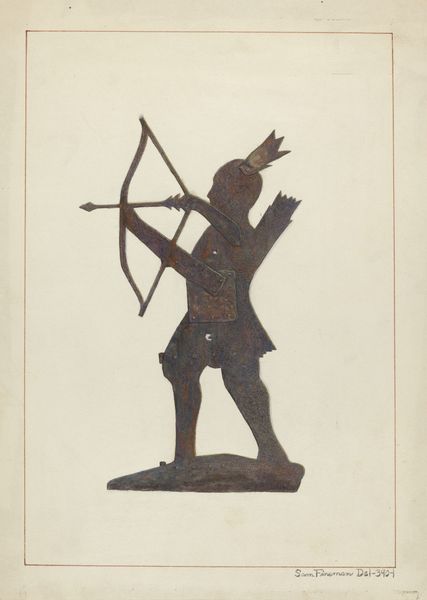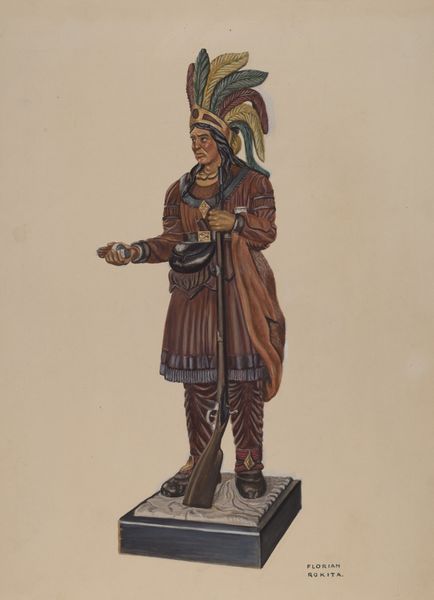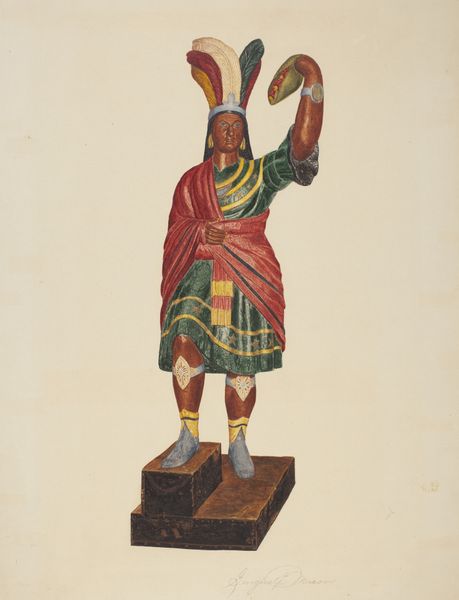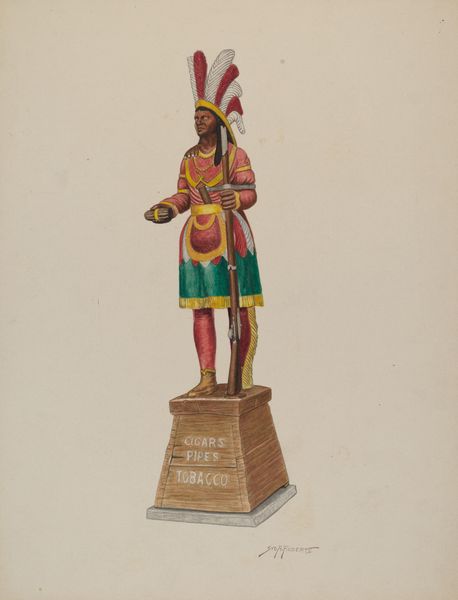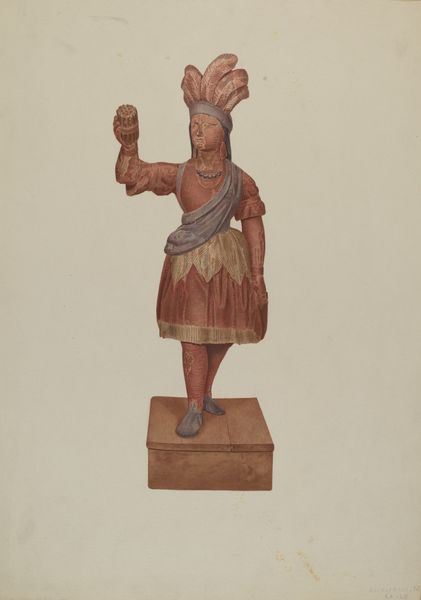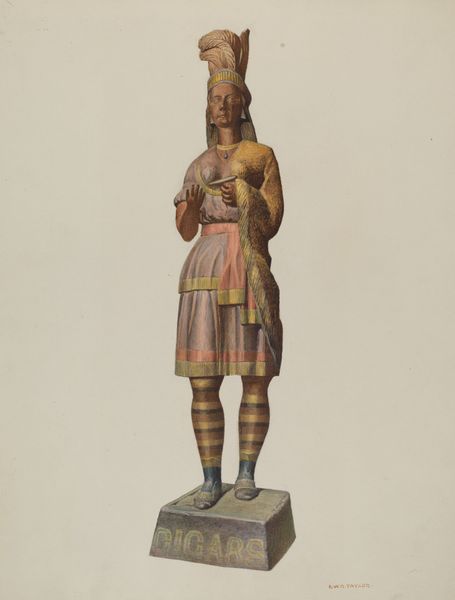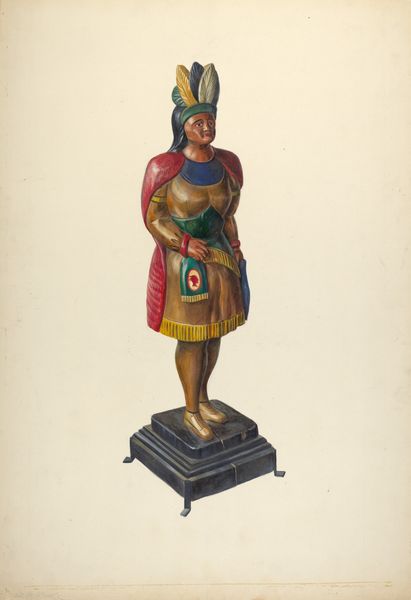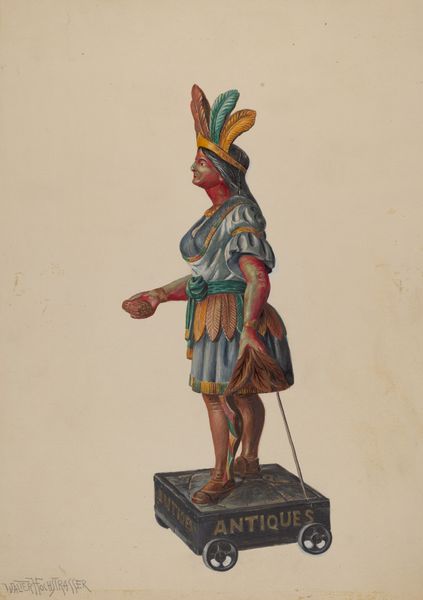
#
caricature
Dimensions: overall: 45.5 x 35.9 cm (17 15/16 x 14 1/8 in.)
Copyright: National Gallery of Art: CC0 1.0
Editor: Here we have "Indian Weather Vane," made around 1938 by Alice Stearns. It looks like a watercolor and graphite drawing, but it’s depicting…well, a weather vane. I’m struck by how stylized it is; it almost feels like a cartoon. How would you interpret this work? Curator: I think it's crucial to consider the cultural and historical context. Native American imagery was often romanticized, stereotyped, and appropriated in the early 20th century. Does this drawing participate in that? Look at how this vane is depicted—is it a celebration of Indigenous culture, or is it participating in a sort of exoticism that diminishes Native identity? Editor: I hadn’t thought about it that way. It almost feels… reductive. Like the artist is playing into a simplified image of a Native American figure. The stance and strong pointing posture—is that perhaps communicating some level of domination or a claiming of territory? Curator: Precisely! Think about the power dynamics at play. Who made the vane and for what purpose? Was it created and used by Native Americans, or for them? Or was it a white American's idea of Native American artistry and identity? These factors shape our interpretation. Also, consider where such vanes would have been prominently displayed, often imposing themselves onto physical space. Editor: So the choice of imagery becomes a statement of control, in a way? This image really prompts a critical dialogue regarding the complexities inherent to representing marginalized groups and historical narratives, doesn’t it? I now wonder, how can modern-day curators address ethical issues regarding the power dynamics involved in presenting artwork portraying historical or cultural groups? Curator: Precisely. These reflections guide our path in interpreting and appreciating pieces from any historical period responsibly. And prompt a critical dialogue, as you note!
Comments
No comments
Be the first to comment and join the conversation on the ultimate creative platform.
